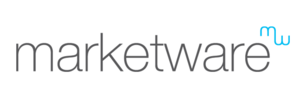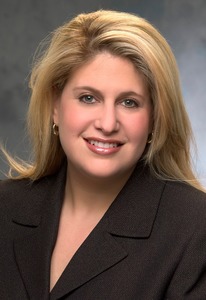Lifepoint Health Takes Its Physician Relations Program Up a Notch with Ascend PRM Solution
// By Jane Weber Brubaker //
 If you could get a physician to refer 100 percent of his or her patients to your hospital or health system, what would that be worth? If the physician refers to specialists, such as neurosurgeons or orthopedic surgeons, it could be worth $2.5 million to $3 million in annual revenue, according to Bryce Bartel, CEO of Marketware. Marketware’s physician relationship management (PRM) solution, Ascend, is designed to help health systems grow volume and retain referrals. Physician liaisons are key to this effort.
If you could get a physician to refer 100 percent of his or her patients to your hospital or health system, what would that be worth? If the physician refers to specialists, such as neurosurgeons or orthopedic surgeons, it could be worth $2.5 million to $3 million in annual revenue, according to Bryce Bartel, CEO of Marketware. Marketware’s physician relationship management (PRM) solution, Ascend, is designed to help health systems grow volume and retain referrals. Physician liaisons are key to this effort.
 Lifepoint Health, with hospitals and other healthcare facilities in 22 states, uses Marketware’s Ascend solution to manage its physician relations program and team of 67 physician liaisons. Mitzi Kent, RN, BSN, is Senior Director of Physician Relations & Industry at Lifepoint Health. “When I came on board here two and a half years ago, we didn’t really have set processes in place for documenting our visits with physicians, or following a true issue-resolution process,” says Kent. “Our goal is to understand what the barriers are, and why physicians choose to send their patients elsewhere.”
Lifepoint Health, with hospitals and other healthcare facilities in 22 states, uses Marketware’s Ascend solution to manage its physician relations program and team of 67 physician liaisons. Mitzi Kent, RN, BSN, is Senior Director of Physician Relations & Industry at Lifepoint Health. “When I came on board here two and a half years ago, we didn’t really have set processes in place for documenting our visits with physicians, or following a true issue-resolution process,” says Kent. “Our goal is to understand what the barriers are, and why physicians choose to send their patients elsewhere.”
Two-thirds of referral decisions are made by physicians, and they frequently split referrals among different organizations—even employed physicians sometimes refer patients to other organizations, “leaking” revenue to competitors. The physician liaison’s role is to build and solidify relations with referring physicians, and grow referral revenues for key service lines or regions.

Mitzi Kent, RN, BSN, Senior Director of Physician Relations & Industry at Lifepoint Health
At Lifepoint Health, Kent needed a tool that the physician liaisons could use in the field, that would feed information back into a dashboard for a consolidated view of the entire system. The cloud version of Ascend allows reps to document meetings and calls on the go, and identify issues for follow-up. The tool uses dropdown menus to simplify input. “There’s not a lot of free text,” says Kent. “They are sales reps, so they need to be out in the field having conversations with customers, not spending their time doing a lot of documentation.”
Some of the topics liaisons discuss with physicians and report on include:
- Scheduling and access—Is the scheduling process too cumbersome? Could it be streamlined? Are same-day appointments needed? Could the schedule be opened up to offer more hours?
- Timeliness and turnaround—Are physicians getting reports back in a timely manner?
- Quality and education—Are referring physicians aware of Lifepoint’s patient and physician satisfaction scores?
Kent uses the Ascend dashboard daily to get a global view of activity across the enterprise. Monthly, it allows her to evaluate and report on:
- Total topics
- Total visits
- Total special projects
- Calls to appointment schedulers
Kent is able to gain insight into activity levels, understand barriers, and identify and resolve issues. The tool helps her zero in on issues that need to be addressed, and determine if they are local in nature, or could be applicable at a regional or national level. It provides transparency into how well physician relations activities align with strategic plans and drive growth. “Every hospital has a different strategic plan depending on its geographic location,” says Kent. “Usually they will have anywhere from five to six service lines that are strategic goals, and they will have specific tactics around those goals. That’s what we’re measuring them on.”
Kent doesn’t believe clinical experience is a requirement for physician liaisons, although she does think that healthcare experience is a big help. Some of Lifepoint Health’s physician relations team members come from a pharma or medical device background. Kent says, “It’s a unique skill set because they have to have a wide range of behavioral competencies to perform the duties.” She lists these qualities:
- Does the person have a “hunter” mentality?
- Do they have good skills to understand customer needs?
- Are they able to probe and figure out what’s important to the customer?
- Are they comfortable speaking with physicians as well as the C-Suite?
- Can they work effectively with internal customers such as hospital directors?

Bryce Bartel, CEO of Marketware
Bartel adds, “It’s a hybrid between a sales rep and a business development rep because they need to teach and inform and provide help and care for the doctor, and persuade and sell the doctor that their services are better than the other guy’s.”
Ascend enables health systems to track and quantify physician relations activity at the physician level, and make the case for its impact on growth and ROI. Bartel explains, “If I’m a physician liaison or business development rep, I may be responsible for two to five hundred physicians. Some of those physicians may be splitters, some of those physicians may be loyalists. As a physician liaison, I need to move splitters to loyalists and I need to maintain loyalists. I’m going to do a number of different things to do that. Visits, engagement, issue resolution, growth plans.”
The challenge is to quantify how much of the growth in referrals can be attributed to physician liaison activity. “It’s the correlation between growth in referral volume and the interactions that they had with doctors that we want to attribute,” says Bartel. Ascend is specifically structured to help the physician relations team achieve their objectives:
- Grow and maintain referrals
- Manage physician issues
- Manage alignment and acquisition process
- Track activities
- Pre-call planning
- Interface with data to identify opportunities and threats
- Measure ROI
Kent stresses the importance of “boots on the ground” in approaching the market. “When hospital systems don’t think they need a physician relations program because they have a marketing program, they forget that the personal touch, that face-to-face contact, that one connection that the doctor’s office needs could be missed,” she says.
Bartel concurs that having a robust physician relations program gives health systems a competitive edge. “If you don’t do anything, you’re going to contract,” he says. “If you do what your competition is doing, you’re going to stay the same. If you are going to grow, you have to do more than what your competitor is doing.”
Jane Weber Brubaker is the Editor of eHealthcare Strategy & Trends; contact her at jane@ehealthcarestrategy.com.

